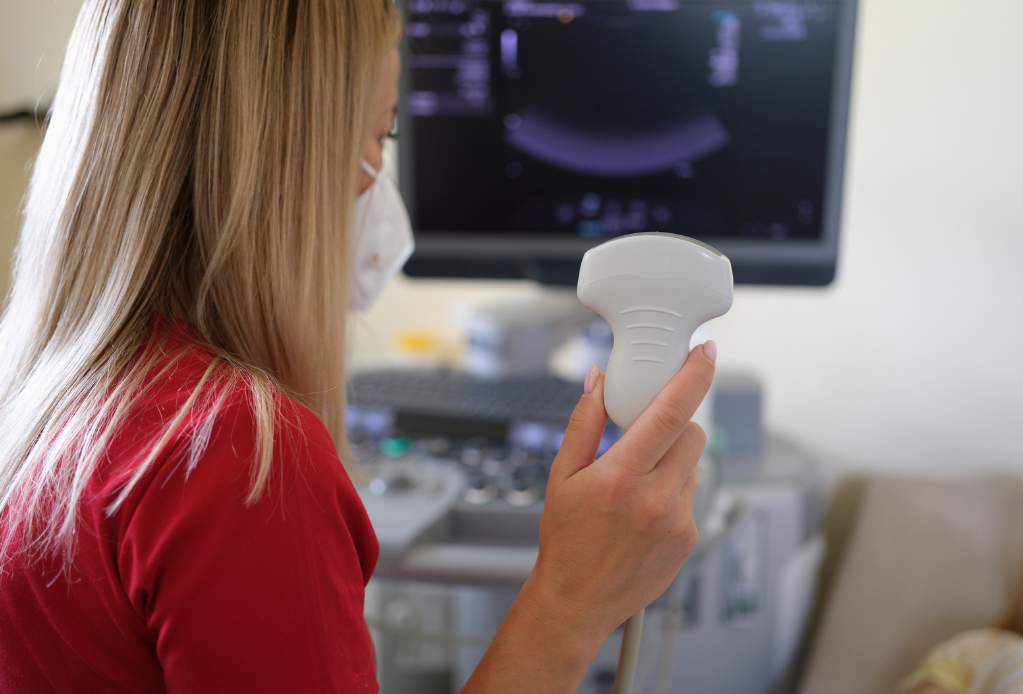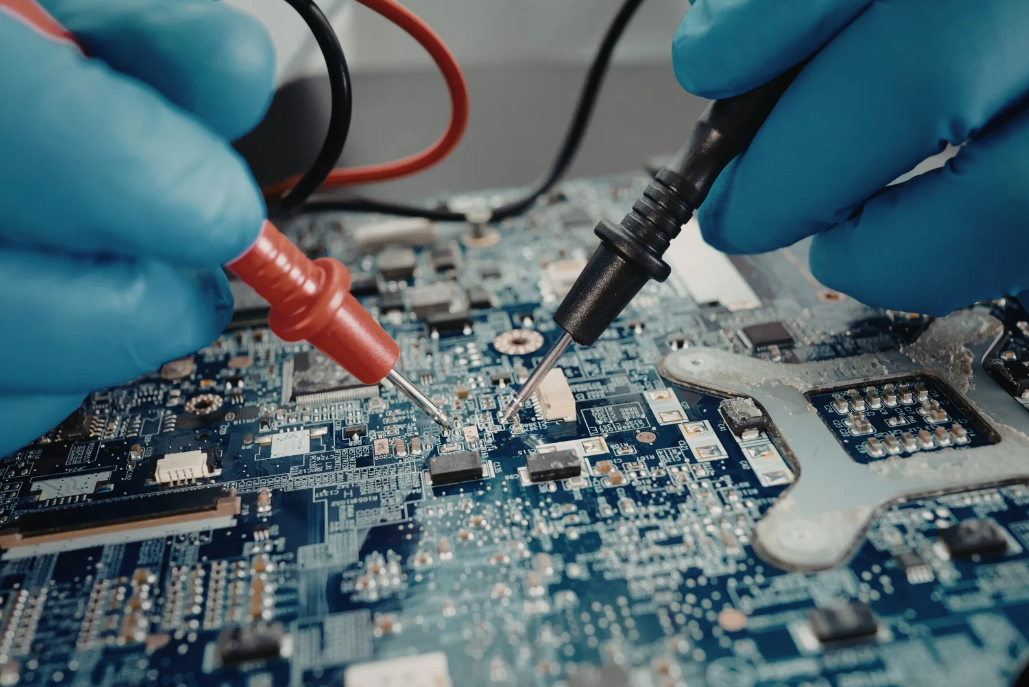Defining Piezoelectricity in PZT Transducers
Okay, so what’s the deal with piezoelectricity? Basically, it’s when certain materials generate electricity when you squeeze them, or conversely, change shape when you apply an electric field. PZT, or Lead Zirconate Titanate, is a ceramic material that’s really good at this. It’s like the superstar of piezoelectric materials. Think of it like this:
- Mechanical Stress –> Electrical Charge (Sensing)
- Electrical Field –> Mechanical Strain (Actuation)
It’s a two-way street, which makes PZT transducers super versatile. You can use them to detect tiny changes in pressure or to create precise movements. It’s all about how the crystal structure of PZT responds to these forces and fields. This is why they are used in piezoelectric applications.
The Role of Ferroelectricity in PZT Transducers
Ferroelectricity is kind of like the backbone of why PZT works so well. It means that the material has a spontaneous electric polarization that can be reversed by applying an external electric field. This is what allows PZT to have such a strong piezoelectric effect. Without ferroelectricity, PZT wouldn’t be nearly as effective at converting energy between electrical and mechanical forms. It’s like the secret ingredient that makes PZT so special. The material’s ability to maintain its polarization at high temperatures is also important. This is why PZT ceramics have a high Curie temperature.

Electromechanical Coupling in PZT Transducers
Electromechanical coupling is all about how efficiently a PZT transducer can convert energy from electrical to mechanical, or vice versa. A high coupling coefficient means that the transducer is really good at converting energy. It’s like having a super-efficient engine. This is crucial for applications where you need precise control or sensitive measurements. For example, in nanopositioning systems, you want to make sure that every electrical signal translates into an exact movement. The electromechanical coupling coefficients of PZT are what make this possible.
Think of electromechanical coupling as the bridge between the electrical and mechanical worlds within the PZT transducer. The stronger the bridge, the more efficient the energy transfer, and the better the transducer performs.
Key Properties of PZT Transducers
Alright, let’s talk about what makes PZT transducers tick. It’s not just about sticking some material together and hoping for the best. These things have specific properties that make them useful in a bunch of different applications. Understanding these properties is key to using them effectively. So, let’s get into it.
High Curie Temperature for Stable Performance
Okay, so the Curie temperature is a big deal. Basically, it’s the temperature at which a ferroelectric material loses its ferroelectric properties. For PZT transducers, a high Curie temperature means they can operate at higher temperatures without losing their piezoelectric abilities. This is super important for applications where things get hot, like in certain industrial settings or inside engines.
Exceptional Electromechanical Coupling Coefficients
Electromechanical coupling? Sounds complicated, right? It’s really just how efficiently the transducer converts electrical energy into mechanical energy (or vice versa). A high coefficient means less energy is lost in the process. Think of it like this: a really efficient engine turns more of the fuel into motion, and less into waste heat. PZT transducers are known for their high coefficients, which is why they’re used in precision applications.
Durability and Stability of PZT Transducers
These things need to last, right? PZT transducers are generally pretty durable and stable. They can withstand a fair amount of stress and maintain their properties over time. Of course, it depends on the specific application and how they’re used, but overall, they’re known for being reliable. Here’s a few things that contribute to their durability:
- Resistance to wear and tear
- Chemical inertness
- Ability to withstand high electric fields
PZT ceramics are preferred due to their strong piezoelectric and ferroelectric properties, high Curie temperature, and versatile formulations that can be tailored for specific applications. However, questions about environmental concerns related to lead content are also common.
So, yeah, that’s the gist of the key properties. High Curie temperature, good electromechanical coupling, and decent durability. These are the things to keep in mind when you’re thinking about using PZT transducers. You can find PZT ceramics supplier for more information.
PZT Transducers in Sensing Applications
Alright, let’s talk about how PZT transducers are used as sensors. It’s actually pretty cool stuff. These little guys can detect all sorts of things by turning mechanical energy into electrical signals. Think about it – pressure, acceleration, even sound waves! It’s all fair game for a PZT transducer.
Precision Pressure Sensing with PZT Transducers
So, how do PZT transducers measure pressure? Basically, when pressure is applied to the PZT material, it generates an electrical charge. The amount of charge is directly proportional to the amount of pressure. This makes them super useful for creating very precise pressure sensors.
Here’s a quick rundown of why they’re so great for this:
- High sensitivity: They can detect even tiny changes in pressure.
- Fast response time: They react almost instantly to pressure changes.
- Small size: They can be made very small, which is great for tight spaces.
PZT pressure sensors are used in a ton of different applications. Think about medical devices that need to measure blood pressure, or industrial equipment that needs to monitor fluid levels. They’re even used in some weather instruments to measure atmospheric pressure.
Accelerometers Utilizing PZT Transducer Technology
Accelerometers are devices that measure acceleration, and PZT transducers are often at the heart of them. The basic idea is that a mass is attached to the PZT material. When the accelerometer experiences acceleration, the mass exerts a force on the PZT, generating a charge. The amount of charge is proportional to the acceleration. You can find PZT ceramics properties that make them ideal for this application.
Here’s a table showing typical performance characteristics:
| Characteristic | Value |
| Sensitivity | 10 mV/g |
| Frequency Range | 1 Hz – 10 kHz |
| Operating Temperature | -40°C to +125°C |
These accelerometers are used in:
- Automotive safety systems (like airbags).
- Industrial vibration monitoring.
- Consumer electronics (like smartphones).
Ultrasonic Sensing Capabilities of PZT Transducers
PZT transducers are also fantastic for generating and detecting ultrasonic waves. When an alternating voltage is applied to the PZT material, it vibrates at ultrasonic frequencies, creating sound waves that are too high for humans to hear. Conversely, when ultrasonic waves hit the PZT material, it generates a voltage. This makes them perfect for ultrasonic sensors.
Some applications include:
- Medical imaging (like ultrasound scans).
- Non-destructive testing (finding flaws in materials).
- Distance measurement (like in parking sensors).
PZT Transducers as Actuators
PZT transducers aren’t just for sensing; they’re also really good at doing things. They can convert electrical energy into precise mechanical motion, making them useful in a bunch of applications where accuracy is key. Think tiny movements, controlled forces, and quick responses. It’s like having a super-precise muscle controlled by electricity.
Nanopositioning with PZT Transducer Actuators
When you need to move something a really, really small amount, like at the nanometer scale, PZT actuators are the way to go. They can achieve this level of precision because the amount they move is directly proportional to the voltage applied. This makes them ideal for applications like:
- Semiconductor Manufacturing: Precisely positioning components during chip fabrication.
- Optical Alignment: Aligning lenses and mirrors in optical systems with extreme accuracy.
- Scientific Instrumentation: Controlling the position of samples in microscopes and other scientific instruments.
Micropositioning Systems Driven by PZT Transducers
Micropositioning is similar to nanopositioning, but on a slightly larger scale (though still tiny!). PZT transducers are used in micropositioning systems to control the movement of objects with micrometer precision. These systems are found in:
- Robotics: Enabling robots to perform delicate tasks with high accuracy.
- Biotechnology: Manipulating cells and other biological samples.
- Manufacturing: Assembling small parts with great precision.
Electromechanical Systems and PZT Transducer Integration
PZT transducers can be integrated into larger electromechanical systems to provide precise control over motion and force. This integration allows for the creation of complex systems that can perform a wide range of tasks. For example, Piezo Direct specializes in custom PZT actuators for such applications. Some examples include:
- Valves: Controlling the flow of fluids in microfluidic devices.
- Pumps: Creating miniature pumps for drug delivery systems.
- Vibration Control: Damping vibrations in sensitive equipment.
The integration of PZT transducers into electromechanical systems requires careful consideration of factors such as the size and shape of the transducer, the operating voltage, and the desired range of motion. Proper design and control are essential to achieve optimal performance.
Here’s a simple table illustrating the relationship between voltage and displacement for a typical PZT actuator:
| Voltage (V) | Displacement (µm) |
| 0 | 0 |
| 50 | 2 |
| 100 | 4 |
| 150 | 6 |
| 200 | 8 |
Advanced Applications of PZT Transducers
PZT transducers are really cool because they can do so much. They’re not just for basic sensors and actuators; they’re showing up in some pretty advanced stuff. Let’s take a look at some of the more interesting uses.
Medical Imaging with PZT Transducer Probes
Okay, so everyone knows about ultrasound, right? Well, PZT transducers are the heart of those medical imaging probes. They send out sound waves and then listen for the echoes to create images of what’s inside your body. What’s neat is that by tweaking the PZT material and the way the probe is designed, doctors can get super high-resolution images. This is especially important for things like seeing tiny tumors or checking on a baby during pregnancy. The precision offered by PZT transducers allows for non-invasive diagnostics with remarkable clarity.
Non-Destructive Testing Using PZT Transducers
Imagine you need to check if a bridge is safe, but you can’t just tear it apart to look inside. That’s where non-destructive testing (NDT) comes in. PZT transducers can send ultrasonic waves through materials like concrete or metal. By analyzing how those waves bounce back, engineers can find cracks, corrosion, or other problems without damaging the structure. It’s like giving the bridge a super-detailed checkup without even touching it. This is used a lot in aerospace, too, to make sure airplane parts are solid.
Sonar Systems and PZT Transducer Sensitivity
Sonar is basically underwater radar, and PZT transducers are key to how it works. These transducers send out sound pulses and listen for echoes to detect objects underwater, like submarines or schools of fish. The sensitivity of the PZT material is super important here because the sound waves can travel really far, and the echoes can be faint. Better PZT transducers mean sonar can “see” farther and more clearly, which is a big deal for navigation and defense.
PZT transducers are becoming increasingly important in advanced applications because they offer a unique combination of precision, reliability, and versatility. As technology advances, we can expect to see even more innovative uses for these amazing devices.
PZT Transducers in Precision Mechanics
Atomic Force Microscopy and PZT Transducers
Atomic Force Microscopy (AFM) relies heavily on PZT transducers for its incredible resolution. Basically, AFM uses a tiny, sharp tip to scan a surface. PZT transducers control the movement of this tip in three dimensions with extreme precision. This allows scientists and engineers to image materials at the atomic level. The piezoelectric effect allows for very fine movements, which is essential for mapping the surface topography. Without PZT transducers, AFM wouldn’t be able to achieve the level of detail it’s known for. It’s a pretty cool application of the technology.

Scanning Tunneling Microscopy Applications
Scanning Tunneling Microscopy (STM) is another technique that benefits greatly from PZT transducers. Similar to AFM, STM uses a sharp tip to scan a surface, but instead of physically touching the surface, it measures the tunneling current between the tip and the sample. PZT transducers are used to precisely control the position of the tip, maintaining a constant distance from the surface. This is crucial for obtaining accurate measurements of the surface’s electronic structure. The precision offered by PZT ceramics is what makes STM such a powerful tool for studying materials at the atomic scale.
Fine-Tuning and Positioning with PZT Transducers
Beyond specialized microscopy techniques, PZT transducers are used in a wide range of applications where fine-tuning and precise positioning are required. This includes things like:
- Optical alignment systems
- Precision machining equipment
- Robotics
In these applications, PZT transducers can be used to make very small adjustments to the position of components, ensuring optimal performance. The ability to control movement with such accuracy makes them invaluable in many areas of engineering and manufacturing. They are also used in electromechanical systems where precise control is needed.
PZT transducers are essential for achieving the level of precision required in many modern technologies. Their ability to convert electrical signals into mechanical motion with extreme accuracy makes them indispensable in fields ranging from materials science to manufacturing.
Emerging Uses for PZT Transducers
PZT transducers have been around for a while, doing everything from sensing pressure to making cool ultrasonic images. But the world keeps changing, and so do the ways we use these little devices. Let’s look at some of the newer, more exciting applications popping up.
Energy Harvesting with PZT Transducer Ceramics
Imagine turning everyday vibrations into usable electricity. That’s the promise of PZT transducers in energy harvesting. PZT ceramics can convert mechanical stress into electrical energy, opening doors for self-powered sensors and devices. Think about it: sensors in bridges that power themselves from the traffic going over them, or wearable tech that charges from your movement. The possibilities are pretty wild.
Converting Mechanical Vibrations to Electrical Energy
It’s not just about big, obvious vibrations. Even tiny movements can be a source of power. PZT transducers are being developed to capture energy from things like:
- Human motion (walking, running)
- Industrial machinery vibrations
- Acoustic noise
This harvested energy can then be used to power small electronic devices, reducing the need for batteries and making things more sustainable. The efficiency of energy harvesting is still a challenge, but research is pushing the boundaries.
Future Innovations in PZT Transducer Technology
The future of PZT transducers is looking bright. Researchers are exploring new materials and designs to improve performance and expand applications. Some exciting areas include:
- Developing lead-free PZT alternatives to address environmental concerns.
- Creating flexible PZT transducers for wearable and implantable devices.
- Integrating PZT transducers with microelectronics for smarter, more efficient systems.
PZT technology is constantly evolving. As we learn more about these materials and how to manipulate them, we can expect to see even more innovative uses emerge in the years to come. It’s a field with a lot of potential to change how we power and interact with the world around us.
Here’s a quick look at how PZT tech stacks up against other energy harvesting methods:
| Method | Advantages | Disadvantages |
| PZT Transducers | High efficiency, small size | Can be brittle, lead content concerns |
| Solar | Abundant energy source | Weather-dependent, requires large surface area |
| Electromagnetic | Simple design, low cost | Low efficiency, requires strong magnetic fields |
PZT transducers are showing up in more and more cool new ways. They’re being used in everything from medical tools to industrial machines. Want to learn more about how these amazing devices work or how they could help you? Check out our website for more information!
Conclusion
So, that’s the PZT transducer for you. It’s pretty clear these things are super useful in lots of different areas. From making sure medical scans are clear to helping robots move just right, PZT transducers are doing a lot of important work. They can turn movement into electricity and electricity into movement, which is a big deal for many modern tools. Even with some talk about the materials they use, people are still finding new ways to make them even better. It’s exciting to think about what else these little devices will be able to do in the future.
Frequently Asked Questions
Why are PZT ceramics so popular for things that use electricity and movement?
PZT ceramics are favored because they’re great at changing pressure into electricity and back again. They also work well even when it’s hot, and we can change how they’re made to fit different needs. But, some folks worry about the lead inside them.
What are some of the tough parts or downsides of using PZT ceramics?
Scientists and users often look for new materials that are better for the environment. Also, people might ask about how well PZT works in very hot or cold places, or if it has other problems.
How can PZT ceramic recipes be changed for different uses?
This question is about how flexible PZT ceramics can be. We can change the amounts of lead, zirconium, and titanium to make them work best for different jobs, like in sensors, motors, or other devices that change energy.
What exactly is PZT?
PZT stands for Lead Zirconate Titanate. It’s a special type of ceramic that can create an electrical charge when squeezed or vibrated, and it can also change its shape when electricity is applied. This makes it useful for many cool inventions!
Where is PZT commonly used?
PZT is super useful in lots of places! It’s in things that measure pressure, like in your car’s tires, and in accelerometers that sense movement, like in your phone. It’s also used in medical imaging, like ultrasound, to see inside the body, and in sonar for underwater exploration. Plus, it helps make tiny movements in very precise machines.
Are there any environmental concerns with PZT?
While PZT is amazing, one main concern is that it contains lead, which can be harmful to the environment. Scientists are working hard to find new materials that work just as well but don’t have lead.



